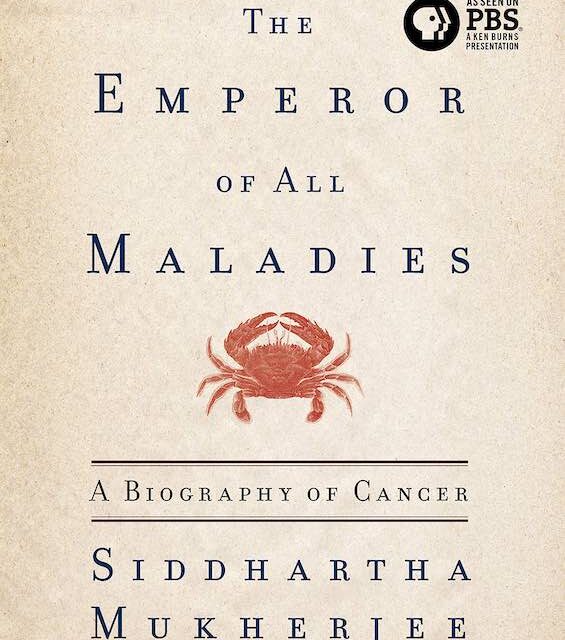
If you’re wondering why the incidence of cancer seems to rise continuously despite all the advances in cancer research and treatment, look no further than the aging of the American population. Cancer, primarily a disease that comes with aging, becomes well nigh inevitable once we get really old. Oncologist Siddhartha Mukherjee proves why in The Emperor of All Maladies in an award-winning book explaining cancer.
Two millennia of medical history
Now, “really old” is, of course, a concept that has steadily crept up the age scale as the decades have rolled by. The disease was identified as long as 2,500 years ago by the brilliant Egyptian physician, Imhotep, a Renaissance man who lived two millennia before the Renaissance, but in that era, when average life expectancy was somewhere in the neighborhood of 40, cancer was a rarity.
By the mid-1930s, when Social Security was introduced and Medicare was only a glimmer in the eye of Roosevelt’s social reformers, the average age Americans could expect to see was about 65. Cancer had become more common, but was only the #2 cause of death from illness in our country. Now, as our life expectancy hovers in the neighborhood of 80, cancer has become our #1 killer. So, Dr. Mukherjee’s “history of cancer” is now doubly welcome—and a brilliant accomplishment it is.
The Emperor of All Maladies: A History of Cancer by Siddhartha Mukherjee (2010) 571 pages ★★★★★
Winner of the Pulitzer Prize for General Non-Fiction

Explaining cancer through genetics
Are you wondering why cancer occurs more frequently with age? Mukherjee’s lucid prose, and his masterful command of the field of oncology, make it a snap to understand. Cancer is a genetic disease, and every gene among the 25,000 or so in the human genome is vulnerable to mutation in the course of time. (Mutation is the bread and butter of evolution, enabling homo sapiens and every other species on our planet to adapt to changing conditions.) As the years go by, it’s no wonder that some genes involved in the processes of growth and renewal in the human organism experience mutations—some of which trigger a process leading to uncontrolled cellular growth. We call that condition “cancer.”
The limited role of environmental factors
But perhaps you’re devoted to the proposition that environmental factors are the “cause” (or at least a cause) of cancer, especially some of those tens of thousands of chemicals that pollute our air, our streams and oceans, and our land. Maybe. We know far too little about the potential for harm in the products of the chemical and plastics industries. And certainly it’s self-evident that alien chemicals introduced into our bodies could possibly play roles in certain types of cancer. Many do in laboratory animals. And, after all, the hormones and proteins that govern the conduct of our biological lives are themselves chemicals. However, if I understand Dr. Mukherjee correctly, those exogenous chemicals could lead to cancer only by interfering in the patterns of growth and mutation that are the controlling factors in the cellular health of our bodies.
A hopeful perspective on cancer
For generations now, the consensus has been that cancer is not a single disease but a broad description of a wide range of illnesses. On its face, pancreatic cancer has little to do with testicular cancer or breast cancer, for example—meaning, of course, that a “cure for cancer” is not in the cards. But Dr. Mukherjee leaves the reader with a broad hint that there may, in fact, be common elements that tomorrow’s cancer researchers can suss out—and find that mythical cure after all. To my mind, this is an extraordinarily hopeful perspective.
More “biography” of cancer than history
Dr. Mukherjee, a cancer researcher with extensive clinical experience, surveys the “history” of cancer from Imhotep to the present day but, as he points out, this book more nearly resembles a biography than a history. He combines moving personal experiences, historical vignettes, biographical sketches of some of the fascinating individuals who have advanced our understanding of cancer, and wonderfully articulate explanations of complex scientific matters. The Emperor of All Maladies won the 2010 Pulitzer Prize for Non-Fiction, and it deserves every bit of recognition it’s gotten.
About the author

Siddhartha Mukherjee is an Indian-American physician, biologist, and author who is best known for this book, the first of the three he has written. He was born to a Bengali family in New Delhi in 1970. After attending school in India, Mukherjee studied biology at Stanford University, obtained a D.Phil. from the University of Oxford as a Rhodes Scholar, and an M.D. from Harvard Medical School. He is a Professor of Medicine in the Division of Hematology and Oncology at New York–Presbyterian Hospital / Columbia University Medical Center and a contributing writer at The New Yorker. Mukherjee lives in New York with his wife, artist Sarah Sze, winner of a MacArthur “Genius” grant. They have two daughters.
For further reading
You’ll find this book on The 40 best books of the decade from 2010-19.
You might also enjoy Science explained in 10 excellent popular books.
This is also one of the Good books about India, past and present that I’ve reviewed on this site.
And you can always find my most popular reviews, and the most recent ones, plus a guide to this whole site, on the Home Page.


























